Australia
EVs and Rare Earth Mining
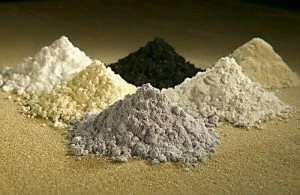
Rare earth metals.
Where are all the earth’s rare metals mined? Are electric vehicles (EVs) really so environmentally sound and friendly?
Rare earths are difficult to find and obtain in most parts of the world, and they are used a lot in all sorts of common and accessible products like mobile phones, cars, aeroplanes, missiles, radars etc. Rare earths are also abundantly used in EVs. EVs use special magnets to power their engines, and most of the magnets in EVs that can cover longer distances on one battery charge are made from rare earth metals. The metals aren’t necessarily rare, but they can be dirty and difficult to process. Many of the processes related to rare earth extraction (getting the rare earths out of the ground) are dangerous, environmentally unfriendly, and, in many cases, the mining workers are older boys and younger men. The process to obtain many of the rare earths is environmentally destructive and produces radioactive waste.
Of the 17 rare earths, neodymium is possibly the most needed rare earth in the world right now. EVs cannot function without neodymium, and lithium – which is currently mostly found in Bolivia.
China has a large portion of the rare earth mining pie and supply network. Back in 2010, China produced as much as 90% of the rare earths that the world needed, and it now seems obvious to me why China’s economy and infrastructure was booming so much at the time. Also, around this time, the rest of the world started to see just how China ruled the rare earth market and power struggles commenced.
Without the rare earth metal, neodymium, an iPhone cannot vibrate and wind turbines would not work. In order for EVs to gain more milage between charges, Rare Earth Permanent Magnets (REPM), which use neodymium, are required. REPMs are the most powerful magnets currently available.
So, though rare-earth elements are used in trace amounts, their unique properties, which include magnetic, heat-resistant, and phosphorescent qualities, make them essential in the production of products like batteries, car engines, EVs and LCD TV displays. EV motors, iPhones, military jet engines, batteries, and even satellites all have something in common: They require rare-earth elements to function.
Other elements like terbium, tritium and europium are crucial to targeting mechanisms in all high-tech weaponry systems. The higher-tech that an EV becomes, a corresponding increase in the level of rare earth mining will be required. The more EVs that are run on the roads (resulting from strict emission standards and government taxing), the more the rare earth resources will be called upon to build and maintain the EV fleet. Currently, an EV battery doesn’t last much longer than 10 years, so EV battery replacement requirements will mean that much more rare earth metals will be needed to maintain the ever-growing global EV fleet.
As of 2018, China had 37% of the world’s rare earth deposits. Brazil currently has 22%, Vietnam 18%, Russia 10% and India has 5.8%. The rest of the world, including the US and Japan, have the rest.
Despite having more rare earth ore than the US, India only mined 3,000 tonnes of rare earths in 2020. During 2020, the US mined 38,000 tonnes. Meanwhile, Australia mined 17,000 tonnes and China mined 140,000 tonnes. In 2020, the US had 16% of the production rate of the world’s rare earths; Australia had 7%, and India had 1%.
In 2020, the following countries were the biggest producers of rare earth metals:
China, mine production: 140,000 MT
United States, mine production: 38,000 MT. The US is also a major importer of rare earth materials, with their demand for compounds and metals worth US$110 million in 2020. The US has classified rare earths as critical minerals, and it is a distinction that has come about from recent trade issues between the US and China.
Myanmar (also known as Burma), mine production: 30,000 MT. Myanmar mined 30,000 MT of rare earths in 2020, up from 22,000 MT the previous year. Myanmar provided 50% of China’s medium to heavy rare earths feedstock.
Australia, mine production: 17,000 MT. Australia holds the sixth largest-known rare earths reserves in the world. It is poised to increase its output, where the production of neodymium-praseodymium products is projected to increase to 10,500 tonnes per year by 2025. Northern Minerals opened Australia’s first heavy rare earths mine in 2018. Its main products are terbium and dysprosium, the latter of which is used in technology for things like permanent magnets.
Madagascar, mine production: 8,000 MT.
India, mine production: 3,000 MT. India holds almost 35% of the world’s total beach sand mineral deposits.
Russia, mine production: 2,700 MT. Russia intends to increase the nation’s share of global rare earths production from the current 1.3% level to 10% by 2030.
Thailand, mine production: 2,000 MT.
Vietnam, mine production: 1,000 MT.
Brazil, mine production: 1,000 MT.
Rare-earths are also mined in South Africa, Canada, Estonia, and Malaysia.
Is an internal combustion engine’s resultant emissions and fossil fuel use really worse than the rare earth metal production mining for EVs and other high-tech electronics? I would question whether a modern and new internal combustion engine with its catalytic converter to capture any emissions is worse than an EV’s definite connection to negative environmental impact and questionable work-force ethics.
Sometimes it is easier to disregard these pre-showroom EV facts and talk about the post-showroom EVs being so wonderful and environmentally-friendly with their so-called zero emissions. Perhaps hydrogen-fuelled cars (to a certain extent), solar energy, and, definitely, cars running on biofuels are a sounder transport investment, but I guess money, power and business links still talk louder for some.
Why We Need More Information on Vehicle Reliability
Local car manufacturers have long been reluctant to release information about vehicle reliability, just as they were with repair data until developments prompted a change. While those changes were a promising sign for motorists, not much else has changed on the reliability front.
Still, the current standards and practices just aren’t good enough. Your new vehicle is likely to be the second largest individual purchase you’ll make in your lifetime. No one wants to end up with a ‘lemon’, so it follows that manufacturers should be more open when it comes to publishing information about vehicle reliability. That is, if they genuinely value their customers loyalty.

What’s the current situation?
From an owner’s perspective, having full and complete information is invaluable when engaging in a decision making process. It’s necessary in order to filter out options that do not align with our needs. This is something that has been recognised abroad. From the US to the UK and other parts of Europe and Asia, industry surveys with motorists surrounding vehicle reliability are common practice and the results are published for all to see.
In turn, this ensures manufacturers not only receive feedback but are compelled to embrace it – to act upon it and improve their vehicles. Tesla, one of the industry’s most-recent entrants to the motoring space, has been one of the most prominent stakeholders in accepting feedback and it goes some way to explain why their growth has been off the charts as it becomes the most-expensive, publicly-listed car brand in the world.
Tesla is one of the first to admit they have had several notable problems with their ‘high end’ vehicles, however, their approach is all about finding the right solution(s) to improve motorists’ driving experiences.
In Australia, only half the feedback cycle is being undertaken. Motorists are often surveyed for their thoughts on vehicle reliability, but the results are rarely if ever made public.
In fact, it’s hard to know in what way this information is being used given its guarded nature. That being said, it’s widely accepted that mechanical issues have improved some way in recent years – even if we are seeing an abundance of recalls that never seem to stop – but it has generally been the car companies with global reach, under pressure from research in other territories, that are amongst the frontrunners in terms of reliability.

What’s the other side of the equation?
If there is one thing to recognise in defence of manufacturers, the human mechanics of operating a vehicle cannot always be recorded. That is, whether a driver has adequately maintained their vehicle, followed through with appropriate servicing, and ultimately how they drive their car.
Now you’re probably saying these things shouldn’t matter. And they shouldn’t. But for the purpose of a direct comparison between cars and manufacturers, it’s hard to compare the likes of a BMW driven by a P-plater, with a Toyota Camry driven by a retiree.
The other element to consider is that reliability data is only one piece of the puzzle. The type of failure, as well as the cost of repairs, should also be considered. One might expect that ‘luxury’ vehicles encounter fewer reliability issues, however, if each time this vehicle requires repairs that cost three times that of a ‘regular’ sedan, what are the results really demonstrating? Furthermore, with the majority of problems these days encompassing technology problems, can these issues be compared on the same scale as that of vehicles with mechanical problems?
Nonetheless, these points shouldn’t really take away from the point that we need further disclosure around vehicle reliability. The introduction of ‘lemon laws’ in recent time is certainly beneficial, but that’s a reactive response when buyers deserve more up-front information and certainty. In fact, manufacturers owe it to motorists, particularly if they are in search of brand loyalty and a vision to improve future cars.
Ford Movements
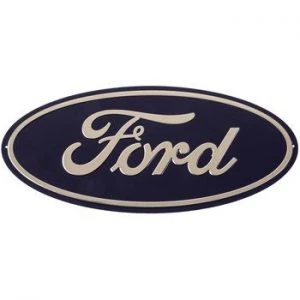
Hot off the Press News has Ford investing big money in EV production. All up, Ford and a South Korean supplier will spend $11.4 billion US on Ford’s EV production and expansion. Ford hopes this spend will enable them to produce more than one million EVs per year in the second half of this decade. The buzz words used in new and future cars include the term electric vehicles or EVs. Established automakers like Ford are racing to try and close the gap on Tesla’s EV lead. As you may be aware, Tesla produces a range of EVs, and Tesla are currently on the way to selling more than 800,000 electric cars this year. Tesla is currently the most valuable automaker in the world, with a market capitalization of nearly $800 billion US. Ford’s market value is $56 billion US.

Ford F-150 Lightening
Ford’s big spend will be its 2nd biggest spend in its history. Under the climate change banner and the Biden government, this latest US multibillion-dollar move to quickly transfer production plants to EV production is seen as a fast track phasing out of gasoline-powered cars and trucks as part of the global push to combat climate change. I won’t debate the science here.
Ford is to build 2 battery plants in Kentucky and 1 in Tennessee under the joint venture with its main battery cell supplier, SK Innovation of South Korea. In addition, Ford will build an assembly plant at the Tennessee location to churn out EV trucks. Ford will invest $7 billion and SK Innovation $4.4 billion, the companies have said. Ford expects electric vehicle models to make up 40% of their vehicle production by 2030. That’s only a little over 8 years away!
Ford’s new truck plant and battery factory in Tennessee is likely to be the place that will produce a new battery-powered Ford F-Series pickup truck, this following the previously announced F-150 Lightning pick up truck. I have to say that the F-150 Lightening is an impressive beast! Ford has said a mix of both the public and businesses had already placed 150,000 reservations for purchasing the F-150 Lightning.
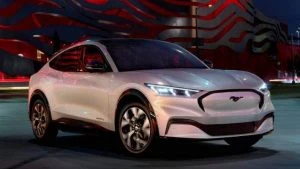
Ford Mustang Mach-E
Also this year, Ford began selling the Mustang Mach-E, which has taken a sizable market share from Tesla. Ford also plans to add an EV delivery van into the mix by the end of the year. Then, in early 2022, the electric F-150 Lightning will roll out of their showrooms and silently onto the tarmac.
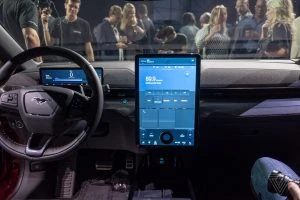
Ford Mustang Mach-E
Mr. Jim Farley, Ford Motor’s president and CEO, has recently said that making electrical vehicles affordable should be among the top priorities for automakers, so that the average vehicle-buyer can purchase one. This is good news, as a new EV is well out of most people’s budget.
He also made a couple of rather poignant comments: one on a key issue on questioning how EV production will impact labour/jobs (a subject rather close to home with our relatively recent Ford and Holden closures), and the other on materials. So, apparently, it costs 30% less to manufacture the Ford electrical vehicles. This will definitely affect production rates and employment long term. Then there is also the issue of battery supply and the rare minerals (i.e., lithium, cobalt) needed to power them, said Farley. Mr Farley stated, “We have to bring battery production here, but the supply chain has to go all the way to the mines. That’s where the real cost is, and people in the U.S. don’t want mining in their neighbourhoods. So, are we going to import lithium and pull cobalt from nation-states that have child labour and all sorts of corruption, or are we going to get serious about mining? … We have to solve these things and we don’t have much time.”
Here in Australia, we haven’t jumped on the EV wagon just yet, and if we are going too, then there is so much infrastructure that will be needed to be implemented before owning an EV becomes a viable option for people like me. Even the thought of the costs involved in getting the right infrastructure is eyewatering, and, like most impatient home renovators and idealistic politicians, the job must be done yesterday! The hard working folk pay for it, of course!
There seems little patience on offer by many governments and climate change activists for making the move to EVs (and other new transportation technology like an EV repower on your existing car) a more balanced and delicate affair. For now, owning an EV is very much for the elite, so Farley is on the right track when he says that the cost of EV ownership must be addressed very quickly.
Ford still has many plants throughout the U.S. However, like other big automotive manufacturers, Ford also has locations right around the world. Ford has many production plants scattered about the globe, and these include assembly plants, engine plants, forging plants, stamping plants and transmission plants. Here, in Australia, Ford still has special engine production and stamping plants.
On a more local note, Ford has a new feature called ‘FordPass’ offered on all their new models sold in Australia. FordPass has a few systems worthy of a mention that include:
Remote Start+, where minutes before leaving, you can start your connected vehicle’s engine from your mobile device in order to heat or cool the cabin using the last known climate control setting.
Vehicle Status, where you can check key variables such as fuel level and your odometer on the FordPass App to help plan your journey.
Remote Lock/Unlock, where, conveniently, you can use your mobile device to make sure the car doors are locked or unlocked without being anywhere near your vehicle. If only it could do that for my house front door!
Vehicle Locator, where you can check your vehicle’s exact location in the FordPass App, which is particularly useful if you share your vehicle with one or more members of your household or if you have forgotten where you parked it. However, if you’ve forgotten where you’ve parked it, then maybe you better get breath tested!
Vehicle Health Alerts, where the FordPass App sends Vehicle Health Alerts directly to your mobile device, pre-empting service needs and general maintenance such as low washer fluid.
Live Traffic, where this feature enhances your SYNC 3 Navigation system by delivering up-to-date traffic updates. This technology allows you to adjust your recommended route based on the traffic conditions, helping you to arrive more relaxed and on time.
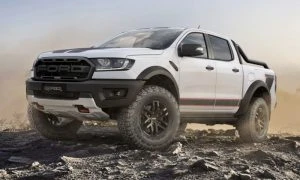
Ford Ranger Special Ediiton
In this second half of 2021, Ford Australia offer a nice broad range of vehicles that include the Puma, Escape and Everest SUVs; the Ford Focus car; the Ford Ranger Ute; the Transit Commercial range that has custom vehicles, vans, buses and cab-chassis models; the Ford Performance range that includes the Fiesta and Focus ST, the Focus ST-3, the Ranger Raptor, the Mustang and Mustang Mach-1; and the Special Edition Rangers and Everests.
It is good to see Ford keeping pace with any EV and hybrid automotive technology and movements; though at what societal and environmental cost? New Ford vehicles are good, and Ford offers a very complete package for all new vehicles in the Ford range. Once you’ve driven a Ford, its not so easy to change out of the brand come new car buying territory.
A Case for Hydrogen-Powered Cars
What’s to like about hydrogen, and hydrogen-powered cars? We cannot see taste or even smell hydrogen, yet hydrogen makes up over 90% of matter. The stars and the sun are made up of hydrogen gas. Here on earth, hydrogen forms compounds; compounds are a mixture of elements that we find on the Periodic Table (That’s the big poster found in every science lab at school, which has 120 – or so – little squares with letters that make up the organised Periodic Table with all the known elements in our world.). Hydrogen is found in almost every living thing. Hydrogen gas is used to make chemicals such as ammonia and methane. Hydrogen is in the water that we drink (H2O). Some car manufacturers and scientists have been beavering away developing what is known as hydrogen-powered cars.
Before the car was even invented, hydrogen power had been around and in use in various forms since the 1800s. It was used widely for gas streetlamps back in the day. It was a Welshman, Sir William Robert Grove, who invented the first fuel cell back in 1839. When you use hydrogen in a fuel cell, the only thing you produce is electricity and water!
So, hydrogen-powered cars are vehicles that contain tanks of hydrogen fuel that then combine with oxygen from the air in a process that delivers power to the car for motion. The beauty of the hydrogen-powered vehicle is they produce only water as a waste product.
In a little bit more detail, a hydrogen fuel cell inside a hydrogen-powered car works like this… The fuel cell has a proton exchange membrane that uses compressed hydrogen and oxygen from the air to produce electricity. The hydrogen goes into the membrane at one end called the anode, while oxygen goes into the membrane at the other end called the cathode. A platinum catalyst, which is positioned on the anode end of the membrane, splits the hydrogen into positive protons and negatively charged electrons. The proton exchange membrane takes only the positive ions, while the electrons are fed into a circuit to make electricity. It’s this electricity which is used to drive the car’s electric motor[s]. These electric motors are what provide the driving for the hydrogen-powered car to give them speed and power!
At the cathode end, the positive ions are travelling along the membrane and combining with oxygen from the air to make water (H2O). This water drips out of the car’s exhaust/tailpipe. If you are driving your hydrogen-powered car through a desert and need some water, then you could believably drink it. Now, how green is that!
How can we produce hydrogen for vehicles? Without going into too many details here (I’ll save that for another blog), hydrogen can be produced in mass from a renewable electricity system that uses generation plants like hydro dams, solar power and wind power generators. This purpose-made hydrogen is known as green hydrogen. Australian mining company, Fortescue, has been talking with government recently regarding the creation of a hydrogen production system for Australia as early as 2023/24.
Tiwai point, which you’ll find on the Southern-most tip of New Zealand (NZ makes up Australia’s two biggest islands!), is currently being used as an aluminium smelter. The NZ government is in talks for designing and consenting to converting this smelter into a green hydrogen production plant even as early as 2023.
I think the hydrogen-powered vehicle makes a lot of (green) sense. It would cut down on the need for an endless supply of new battery packs that EVs require, which are made from preciously rare earth’s resources (e.g., lithium, nickle, cobalt…), and the energy and space to dispose of the spent battery packs would be a problem.
Of course, we would need to build up a network of hydrogen refuelling stations across Australia to power this new type of vehicle. This network-building will be easy enough and relatively cheap compared to the massive and costly EV network/upgrade. Green hydrogen fuelling stations could simply be added onto any petrol/diesel refuelling station currently in operation across Australia. This would also ease the changeover period for the general public.
If you are wondering what hydrogen-powered cars might look like, do take a look at the new Toyota Mirai, for an example.

Toyota Mirai
